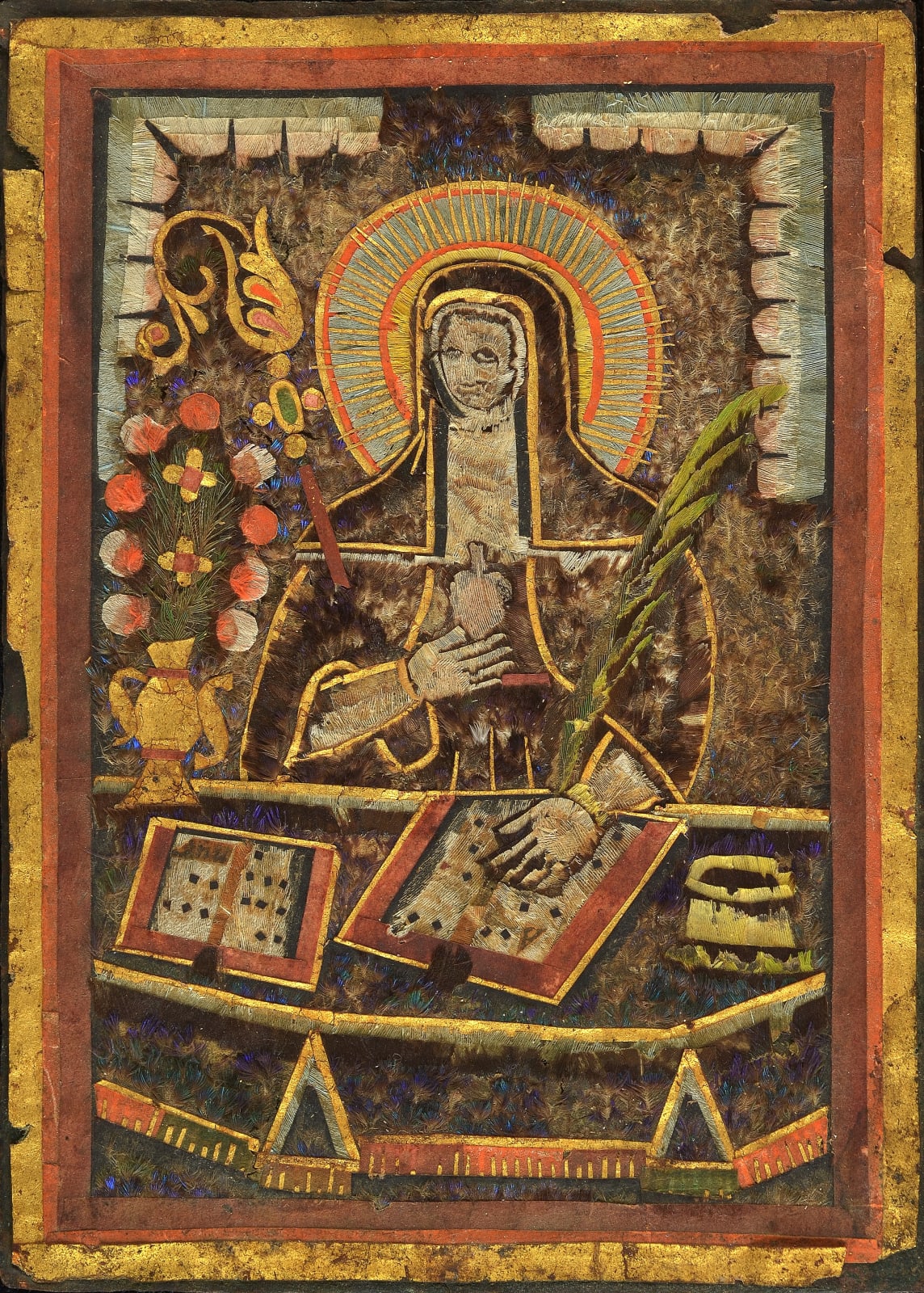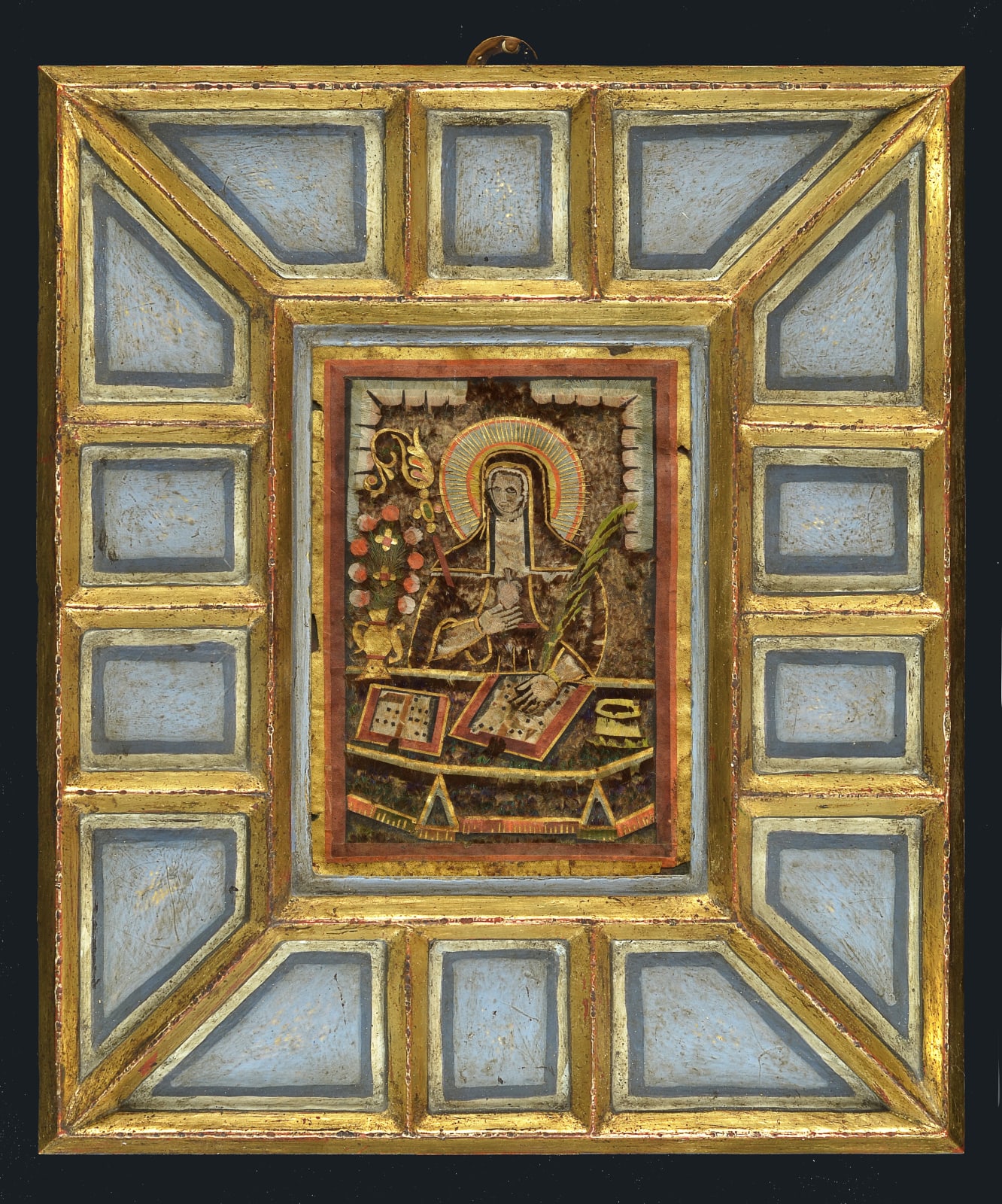Saint Gertrude
Unidentified artist, New Spain, 17th Century
Feather work mosaic, (Emplumado), paper and gold leaf on copper.
14 x 10 cm
Mexican feather work or Arte Plumaria was an important art form that developed during the pre-Hispanic and colonial periods in what is nowadays Mexico. The artisans who performed this technique...
Mexican feather work or Arte Plumaria was an important art form that developed during the pre-Hispanic and colonial periods in what is nowadays Mexico. The artisans who performed this technique in the Pre-Columbian era were known as amantecas, who lived in the neighborhood of Amantla in Tenochtitlán. This artistic and decorative technique was much appreciated, so much so that it was usually taught to the noble class. In the Pre-Hispanic world, feathers were considered to have magical properties as symbols of fertility, abundance, riches and power and those who used them were associated with divine powers. The Aztecs used a natural glue or tzauhtli as an adhesive for feather mosaics. This glue was extracted from the bulbs of various species of orchids.



